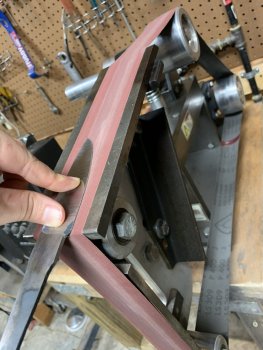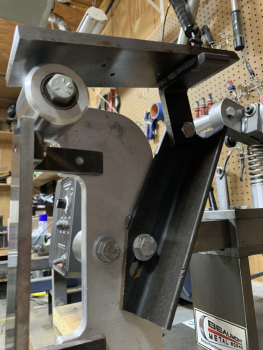I’m not sure. Originally, I was planning to do different plates with different radii depending on the look I was going for. I had one corner-rounding endmill and just zipped it across. I can check tomorrow. This one is definitely about the same to what I’d end up with on the edge of the regular platen. They come out incredibly clean this way with no deep vertical scratches to deal with when it comes time to hand sand.
Also, that top bolt has to be TIGHT to keep it from rotating once you put tension on the belt. I originally thought I’d just weld it once I figured out where it should be but have just left the bolt there.
If I was making another, I might would make the top platen bolt-on so I could easily replace the platen in the future. In this case, I welded it to the small piece of angle iron.
I also relieved that back corner (facing the tracking wheel) because it seemed like it had a bit of a hard time overcoming the static friction at first. Just takes a little playing to figure out where your grinder likes it to be.


